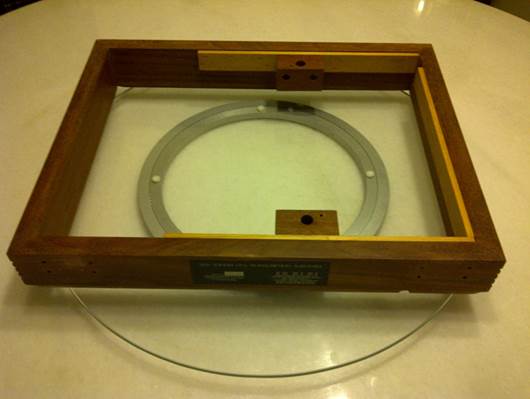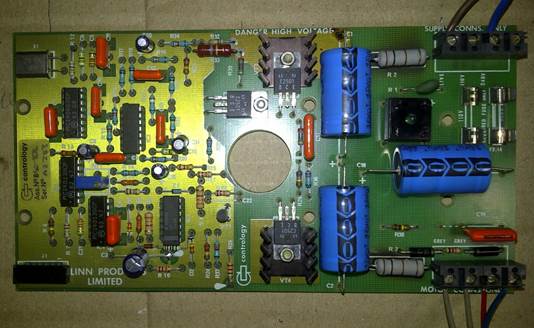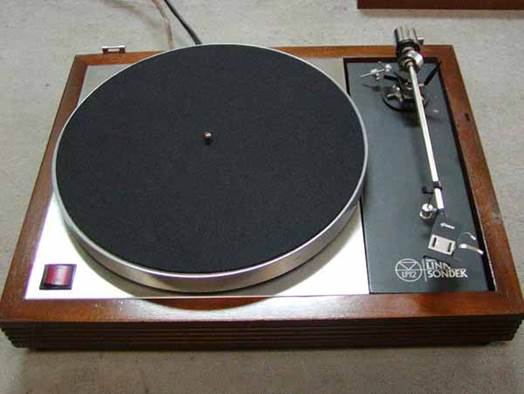Mods and mockers
Eighties mods continued the theme, making
the deck sound ever more neutral and better resolved. The plinth was braced
more stiffly (53,000), the sub-chassis strengthened (54,101) and the suspension
springs stiffened. A better bearing arrived in 1987 (70,000), along with a
superior arm board (79,160), but it wasn’t until 1990 that the Lingo power
supply arrived – this was the single biggest upgrade to date, giving a far more
precise, CD-like sound without losing the charm of vinyl. Still, by this time
some Linn lovers were beginning to think the deck was just a little too close
to the demon digital for comfort.

Earlier
Sondeks were available in an Afromosia or black ash finish
Linn was on a run, and not long after in
1992, the Cirkus bearing and sub-chassis package (90,582) was introduced, and
to date this is still the most important mod to the deck, taking it away from
euphony to accuracy in one seamless leap. It worked wonders for its information
retrieval, also improving the sound staging dramatically too. Around the same
time, Linn offered the option of its Trampolin kit, an upgraded baseboard to
replace the hardboard base. After a very busy schedule of modifications, the
company then went quiet. Admittedly, an early ninety Cirkus LP12 was still
completely price-competitive with its rivals, but by the middle of the next
decade this wasn’t so. Just at the time when many thought Linn had abandoned
the LP12 in favor of the (then) more popular CD12 variant, more news arrived...

First was the Keel sub-chassis option in
2006. Costing over $3,000 it raised some eyebrows – but correctly identified
one of the big weaknesses of the deck, its resonant, overly compliant steel
sub-chassis. Although everyone loved the sonic improvement it wrought, many
questioned Linn’s intentions on the pricing – the new sub-chassis cost more
than a whole new deck (with the old sub-chassis fitted). More mutinous
murmurings arrived with 2009’s Radikal DC motor, which was even more expensive
than the Keel. Both upgrades made major, profound changes, taking the sound
much closer to the ultra-clean, sparkly sound of SMEs and Avids of the day,
without losing the LP12’s trademark musicality. It made for a beautiful sound,
but also made the deck a lot less accessible in its highest form.
The in sound from far out
The LP12 still sells, but in nowhere near
the numbers of yesteryear. Happily though, this still means any LP12 owner can
get easy access to a comparatively large number of dealers who can service the
deck, expertly yet reasonably inexpensively. It also means that anyone wishing
to buy secondhand can pick up one at a decent price, simply because of the
relatively large number around. You can drop between $225 and $22,500 on one
depending on age, spec and condition, and you’ll be guaranteed to end up with
something that is at the very least interesting and at best breathtakingly
musical to listen to. If you still haven’t heard an LP12, you owe it to
yourself to do so.

The
LP12 still sells, but in nowhere near the numbers of yesteryear.
The facts
There are now a great many unofficial LP12
modification packages, from bespoke plinths and top plates to a plethora of DC
motor upgrades and power supply tweaks. On top of all this, the introduction of
the Keel has spurned a wealth of far cheaper imitators, many made from carbon
fiber rather than OE-spec aluminum. Many of the mods packages are quite
successful. Ivor Tiefenbrun himself seems reasonably sanguine that his baby has
spurned such a vibrant aftermarket accessories scene, while insisting (of
course) that the original Linn spec is best. Certainly you can make your Linn
sound different to stock with, say, top-plate mods such as those from tiger paw
– but it does beg the question why you shouldn’t just go out and buy a more
neutral sounding turntable in the first place? Certainly, there’s a hardcore of
Linn LP12 owners who want to stay committed to the deck, and here is where
these various mods make sense.